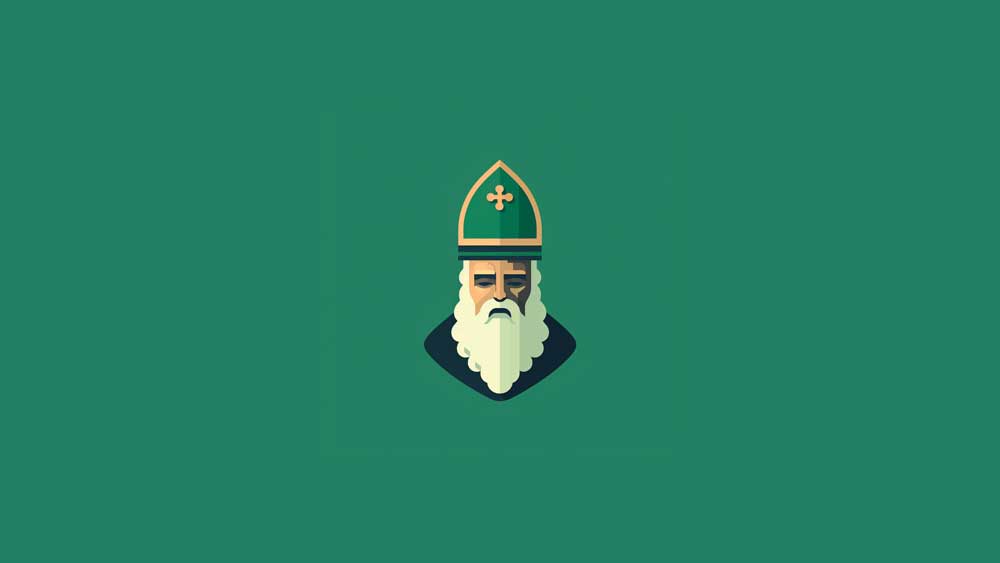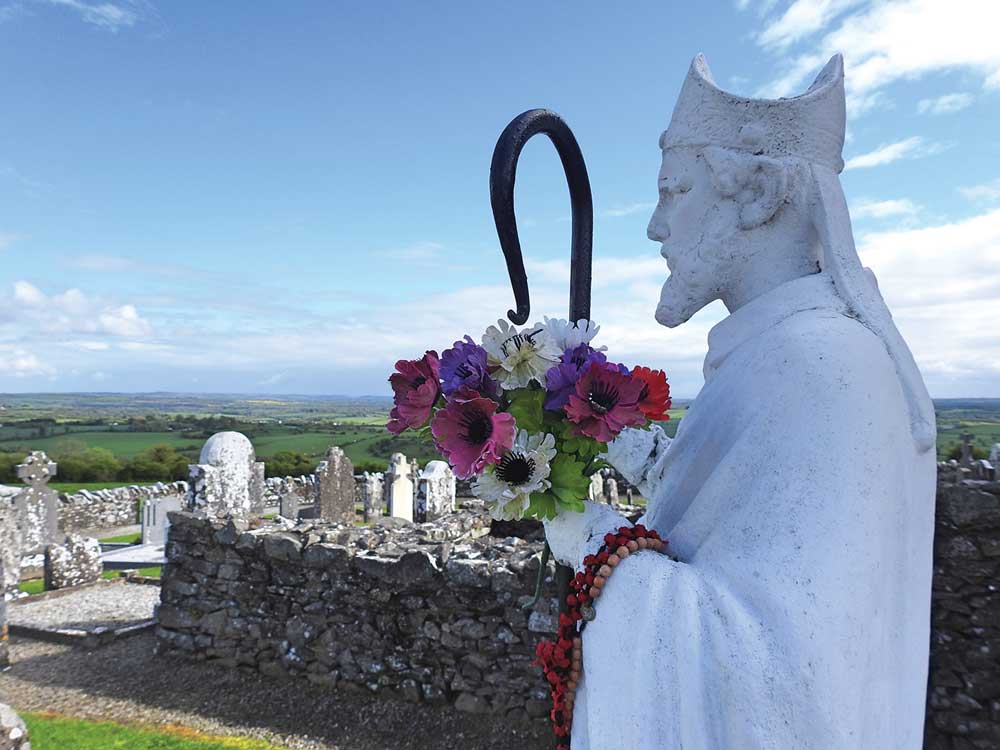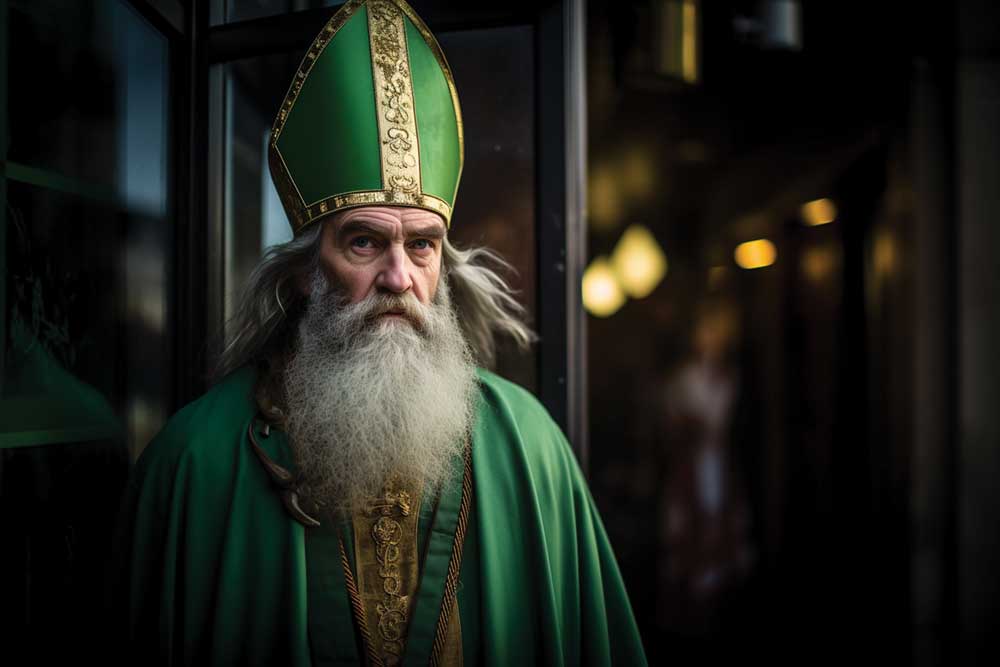
Shamrocks, leprechauns and green beer: these are the images we associate with the patron saint of Ireland and the day named after him. On March 17 every year, people around the world gather to celebrate Irish culture and the saint who supposedly espouses it. So, that begs the question, who was the historical Patrick, how much of what we know of him is based on fact and how much is pure fiction?
sorting fact from fiction
The good news is that Patrick’s life was probably based on a true story, so let’s start there. The first undisputed fact you may find surprising is that the real Patrick wasn’t Irish. He was actually a Christian living in Roman Britain toward the end of Roman rule in the British Isles. There have been many disputes as to the place of his birth, with some scholars forwarding the notion that he was originally from South Wales, Scotland or Northamptonshire, to name a few. What they all agree on is that Patrick wasn’t Irish.
Differing hagiographies refer to Patrick by different names, all referencing supposed birthplaces or identifiers with famous landmarks. Some refer to him as “Maewyn Succat”, whereas others call him “Magonus” or “Cothirthiacus”. In his writings, he calls himself “Patricius”, which some think is more of a title, due to its close association with the Latin word for “father”. For this article, however, we’ll keep Patrick’s name simple.
We can safely say he lived around the fifth century AD, because his own writings are a mixture of Old Latin and Vulgar Latin, suggesting he wrote at a linguistic transitional point in history. Also at this time, Roman Britain had been largely Christianised but notably, Ireland was still a non-Christian nation of Celtic tribesmen and petty kingdoms.
 confession time
confession time
Though many accounts have been written about Patrick’s life, we will almost exclusively draw from his autobiography, called the Confessio, or Saint Patrick’s Confession. In it, he describes himself as “a simple country person” and “the least of all believers”. He goes on to say that despite his father being a deacon and his grandfather being a priest, in his teenage years, Patrick didn’t have much of a personal faith, at all. In his own words, he “did not know the true God at all”. Patrick’s story starts much like Jonah’s, because, like Jonah, Patrick boards a boat and is taken far away from his home. Unlike Jonah, Patrick is taken against his will by Irish pirates, along with “thousands of others”. He doesn’t describe how or why this comes to pass, just that, “The Lord brought his strong anger upon us, and scattered us among many nations even to the ends of the earth.”
These Irish raiders sold Patrick to an unnamed master and for six years he was kept as a slave among the Irish people. Far from home, his former lack of spiritual conviction changed radically and he had something of a conversion experience. “Even though it came about late, I recognised my failings. So I turned with all my heart to the Lord my God, and he looked down on my lowliness and had mercy on my youthful ignorance.” What follows is a long confession of faith, wherein Patrick expresses, in great excitement, all the new revelations that only now are becoming real for him. It’s also an uncharacteristically penitent self-reflection. Often hagiographies portray saints as having, well, saint-like lives. Patrick’s internal dialogue is much more honest. He says, “Although I am imperfect in many ways, I want my brothers and relations to know what I’m really like so that they can see what it is that inspires my life.” Here is a man who is reckoning with his past mistakes and is in awe of a God who accepts him despite them. “More and more the love of God increased, and my sense of awe before God. Faith grew, and my spirit was moved, so that in one day I would pray up to one hundred times, and at night perhaps the same.”
wandering in the wilderness
The pirates took Patrick to Ireland and sold him to an unnamed master. For six years, he lived as a slave. Far from home, his former lack of spiritual conviction changed radically, and he had something of a conversion experience. “Even though it came about late, I recognised my failings. So I turned with all my heart to the Lord my God, and he looked down on my lowliness and had mercy on my youthful ignorance.” What follows is a long confession of faith. Unlike the gilded lives of other saints, Patrick is much more honest. He says, “Although I am imperfect in many ways, I want my brothers and relations to know what I’m really like so that they can see what it is that inspires my life.” Here is a man who reckons with his flaws and expresses his awe to a God who accepts him despite them. “More and more the love of God increased, and my sense of awe before God. Faith grew, and my spirit was moved, so that in one day I would pray up to 100 times, and at night perhaps the same.”
After six years, God came to Patrick in a dream and told him that his liberation would soon be at hand. He was instructed to make a journey of 300 kilometres, whereupon he would find a ship that would bear him back home. Eagerly, he made the perilous trip, found the ship and begged its captain to take him aboard. They reluctantly let him aboard and after three days of sailing, he was back in England. After many more misadventures, Patrick was home.
early church
After reuniting with his family, Patrick studied to become a priest. Hearing the call of God once again, Patrick’s mission became to return to Ireland to convert the Irish people to faith in the Christian God. What follows in the Confessio is a scattered, vague series of accounts of Patrick’s missionary journey in the Irish Isles. He tells of wealthy Irish women converting to Christianity and becoming nuns, despite persecution from their families. He also mentions the growing number of Irish Christians who, despite cultural pressure, became the seedbed of what today we call the Irish Church. One of the greatest feats Patrick is said to have accomplished is abolishing human sacrifice. He believed and taught that God had offered Jesus Christ to them, as the end of all sacrifice. Of course, no discussion on the life of Saint Patrick would be complete without exploring some of the legends that have become synonymous with him. Let’s take a brief look at two of the most famous ones.
 the shamrock
the shamrock
When we think of the Holy Trinity—that is, the triune nature of God, the Father, God the Son and God the Holy Spirit—many of us go straight to the three-leaf clover synonymous with the Emerald Isles. Legend says that the shamrock was sacred to the Celtic Irish and was therefore chosen by Patrick to explain the concept of the Trinity to them. Expert on Irish spirituality Patricia Monaghan contended that there is no evidence that the shamrock was sacred to the Celtic Irish. (1) Patrick himself makes no mention of this teaching of the Trinity in his writings, and the earliest account we have of such a tale is found in the 18th century, which means the tale of the shamrock is probably made up.
 the isle of snakes?
the isle of snakes?
Probably the most popular story surrounding Patrick is his supposed banishing of all snakes from Ireland. The story goes that Patrick was atop a mountain (that would later be known as Croagh Patrick) amid a 40-day fast when all of a sudden, he was attacked by a horde of snakes. Harnessing the wrath of God, he drove the snakes into the ocean and out of Ireland, permanently.
The story was never mentioned in his writings, with the earliest account of someone driving snakes out of Ireland attributed to another saint, Columba, in the seventh or eighth century. The story was later attributed to Patrick by Jocelyn of Furness in the 12th century. Of course, Jocelyn does not cite an earlier source. Later Christian historians mention the tale, but most of them are equally sceptical about its historical accuracy. Sadly, like the shamrock, this tale is probably a historical myth.
 from glory to gluttony
from glory to gluttony
Officially made a feast day by the Catholic Church in the early 17th century, St Patrick’s Day has become a modern mainstay, despite its ancient origins. However, when we consider the historical person and his place in Irish history, it’s surprising we still call it St Patrick’s Day at all. Excessive alcohol consumption, Irish nationalism and raucous behaviour better reflect the American culture that popularised the day than it does Saint Patrick himself.
Despite our cultural lack of familiarity with the historical Patrick, I must admit I was surprised by just how different a person he is compared to the myths. As is so often the case with religious figures, the legends told about their life create a gulf of incredulity to the point where they cease to be a person and morph into a mystical, almost inhuman icon. And yet, his impact on Christianity was profound. Following the Roman withdrawal from Britain, what had once been a Christian nation became muddied once again in the mire of various cultic beliefs and traditional religions. The only bastion in this changing world was the Irish Church. Many years after the time of Patrick, Irish missionaries returned to Britain to convert the same people who had once converted them. In a very real way, Patrick saved Christianity in the British Isles.
So, the next time you see a shamrock or green beer, spare a thought for old Saint Patrick. Though his legacy diverges from his actual life, he still has something profound to say about the life of faith today.
1. Patricia Monaghan, The Encyclopedia of Celtic Mythology and Folklore. Infobase Publishing, 2009.




 Follow
Follow








